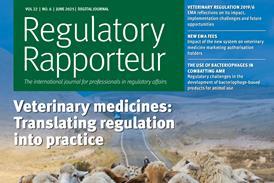ICH Q1 guideline revisions to promote innovation and enable global patient access to high-quality medicines

Abstract
Two International Council for Harmonisation of Technical Requirements for Pharmaceuticals for Human Use (ICH) Quality guidelines currently undergoing revision are particularly relevant for products in early development. These are ICH Q1/Q5C on Stability and ICH Q6A and Q6B on Specifications.
Largely driven by the need to foster innovation, industry and regulatory agencies are fundamentally aligned on the need to encourage the use of science- and risk-based approaches and state-of-the-art analytical tools and technology, with the shared goal of enabling earlier patient access to high-quality medicines.[1] This has resulted in a major overhaul of the Q1/Q5C and Q6A and Q6B guidelines.
The new ‘ICH Q1’ and ‘ICH Q6 (R1)’ will combine guidance for both synthetic and biological drug substances and drug products, re-examining decades of established practice and seeking to harmonise core concepts across different molecule types.
As new and advanced therapies emerge, the draft ICH Q1 guideline encourages the adoption of a more flexible, science-based approach to stability that can accommodate them. This is the first of a two-part article and will discuss the Q1 stability guidance.
How to read this journal article
Thank you for visiting Regulatory Rapporteur. Journal articles are restricted to TOPRA members and registered users.
If you are a TOPRA member, or have already registered for limited free access, log in now (Option 1 below).
Not yet a member? You can either join TOPRA (Option 2 below) or register to view limited content for free (Option 3 below).



















